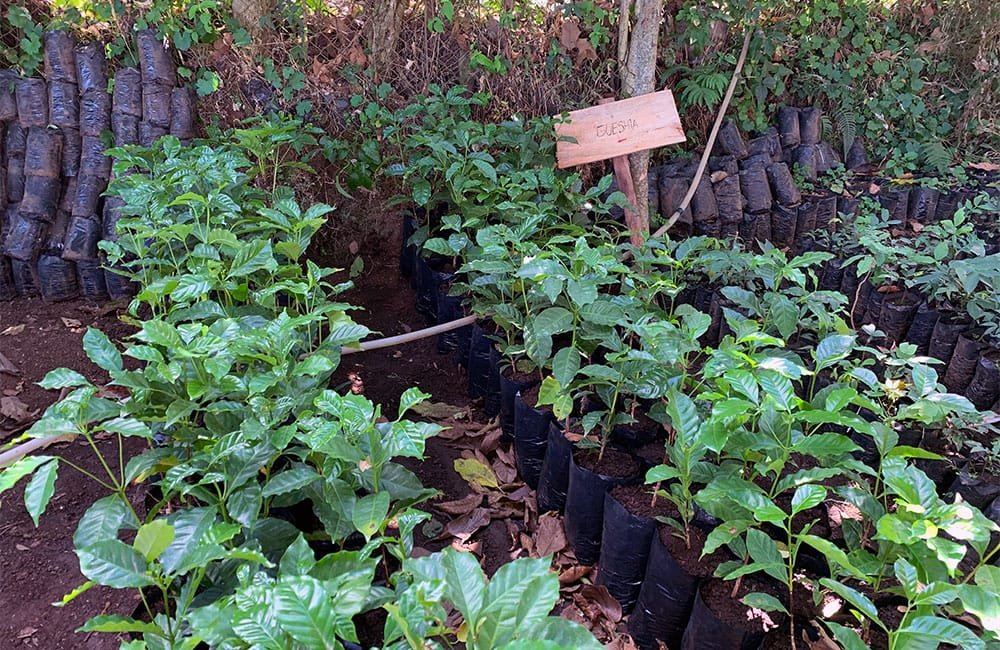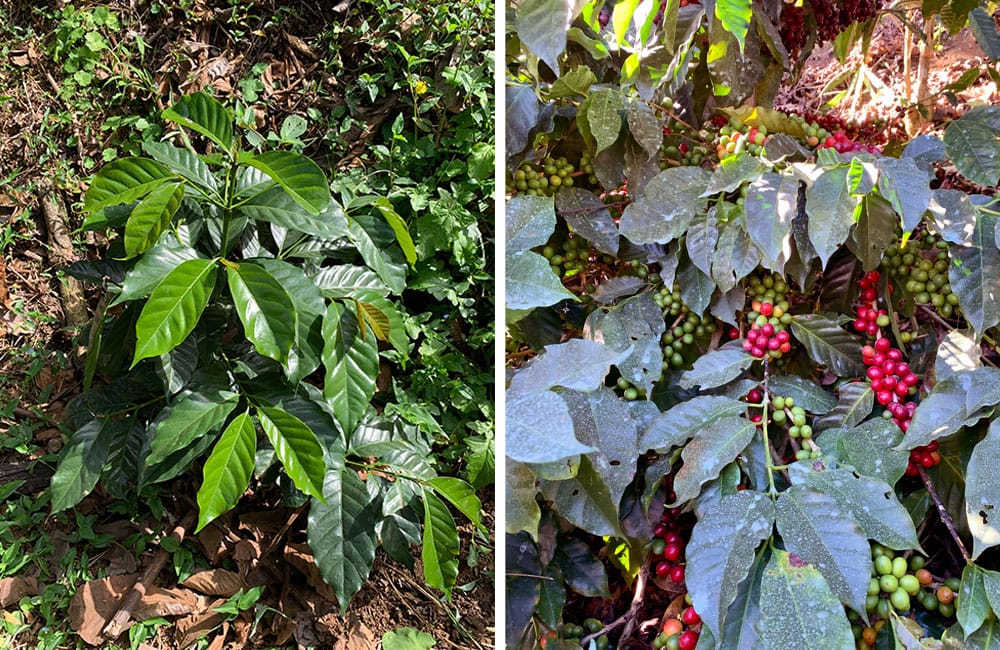| Santa Ana | |
| 1,000 masl. | |
| Bourbon, Pacas | |
| Natural anaerobic 120h | |
| Rodolfo Ruffatti |

It is a farm located 1,000 meters above sea level and where coffee has been grown since 1970.
The Lombardia farm is located in the Santa Ana region, where coffee has traditionally been grown.
But now it is one of the few farms remaining in this region that maintain this type of crop and through it helps maintain the biodiversity necessary for coffee plants to grow in optimal conditions.
The origin of the Lombardia farm

In 1970 they bought the Lombardia farm in the Santa Ana region. At that time almost all the plantations in this region were dedicated to coffee.
Since then, coffee profits have fallen dramatically, driven by speculation in financial markets. As a result, many of the coffee growers have had to change crops and are now engaged in corn.
From growing coffee to corn (and the effects this has had)

The cultivation of coffee needs biodiversity and vegetation to create a microclimate and trees for shade.
In addition, the quality of the land is also very important and for this a rich variety of vegetation and a balanced ecosystem are essential.
Due to diminishing profits of growing coffee in recent years, many of the coffee growers in this area have had to abandon this crop and switch to corn.
For this, they have burned large areas of forest and vegetation that were previously used to grow coffee, leading to a progressive desertification of the region.
In addition, the monoculture of corn requires pesticides and chemicals that impoverish the quality of the land and its chemical biodiversity.
All this is due to the fact that coffee is a product that is bought and sold in financial markets and whose price is speculated in future markets.
The Lombardia farm bets on specialty coffee

The cultivation of specialty coffee requires biodiversity and a balanced ecosystem, which is why the Lombardia farm remains a bulwark against desertification and fighting to help the environment.

Rodolfo Rufatti, grandson of the Rodolfo Rufatti who initiated the Ruffatti family in coffee cultivation in El Salvador, and who is now in charge of the family business, is introducing more biodiversity on the farm that indirectly also benefits quality of the coffee.
Coffee processing at Finca Lombardía

This means that the coffee cherries, once picked, are left to dry in beds until the desired humidity is reached before being pulped.
This method gives the resulting coffee a fruity but clean, balanced and sweet profile.
Each batch is processed individually and with great care by the Productor Coffee team under the supervision of Rodolfo Ruffatti.
The anaerobic fermentation processes

Inside the tanks, microorganisms naturally present will begin to break down glucose molecules, a chemical reaction that generates CO2 and heat.
This will cause the oxygen in the tank to be displaced and expelled through the one-way valve.
The bacteria naturally found in the coffee cherry and in the mucilage produce enzymes during this process, which are what cause less complex compounds to be generated, such as organic acids and alcohol.
If you want to know more about this process, you can visit our article where we explain it in detail: Anaerobic coffee fermentation
Why is anaerobic fermentation used and how is it done?

This means that you can modify this profile to improve some of the qualities present in said coffee.
Once picked at their optimum point of ripeness, the cherries are left to ferment in hermetically sealed tanks for 120 hours.
In the case of this particular coffee, the process is done in plastic bags hermetically sealed, but this may vary with every producer.
The cherries can be placed to ferment pulped or without pulping, depending on the chosen processing method after fermentation, natural, washed or honey being the usual options.
For this natural lot, the cherries are left to dry on raised beds for approximately 2 weeks.
During this time, they should be turned regularly to ensure uniform drying.


